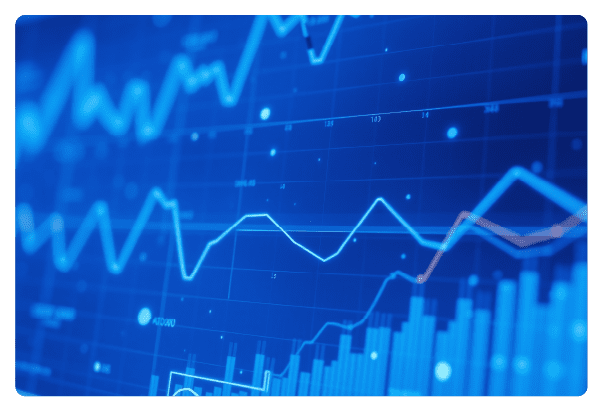
BALDWIN DATA
Q2 2025 Market Pulse
Review premium pricing trends within The Baldwin Group’s collective book of business for the property and casualty markets, including commercial auto, general liability, umbrella, workers’ compensation, management and professional liability, and cyber.
SPECIALIZED EXPERTISE
Industry insights
Through the insurance market’s shifts and turns, The Baldwin Group is dedicated to delivering the specialized expertise and strategic insight necessary for our clients to navigate the complexities of evolving market cycles. By fostering meaningful collaboration with both our clients and partners across the insurance sector, we deliver solutions that help empower you to transcend market shifts, harness opportunities, and protect what’s possible for your business.
Construction
Overview
The construction industry entered 2025 showing signs of recovery from persistent inflation, steep borrowing costs, and supply chain constraints. However, midway through 2025, a growing sense of uncertainty is clouding the construction economy’s outlook. High interest rates, renewed inflationary pressures, tighter lending standards, and uncertainty around trade and immigration policies have contributed to a noticeable slowdown in project activity. According to ConstructConnect, total construction spending is down 13% through May 2025 compared to the prior year, with public infrastructure and data centers standing out as the few areas of healthy activity.
For now, the construction insurance market remains mostly stable, though history has shown that any prolonged economic downturn could trigger a shift towards a harder insurance market. As project activity slows and contract revenues shrink, the reduction in scale puts an upward pressure on rates across many lines of coverage. As we stand here midway through 2025, most lines of coverage do remain stable—namely workers compensation, environmental, professional liability, and cyber. However, the umbrella and builders’ risk markets have deteriorated considerably since this time last year due to a decline in underwriting performance.
For the remainder of the year, insureds should keep a close eye on shifts in project financing, material price trends, supply chain resilience, and labor availability, all of which may influence how underwriters assess risk and pricing going forward. If backlogs begin to shrink and balance sheets become stressed, contractors should be prepared to reinforce their commitment to safety and quality to their underwriters in order to minimize the impact of a potentially harder insurance market.
Surety and Subcontractor Default Insurance
Overview
Midway through 2025, the construction industry continues to demonstrate resilience amid evolving macroeconomic pressures. Public infrastructure projects remain a source of optimism, but contractors are still contending with inflation, labor shortages, and the early effects of newly imposed tariffs.
Total construction spending through April is down 0.5% year-over-year, the first decline since April 2019. Public nonresidential construction continues to show strength (+5.6% YOY), bolstered in part by residual disbursements from the Infrastructure Investment and Jobs Act (IIJA).[2] Conversely, private nonresidential work has slowed due to tightened lending conditions and persistently high interest rates.
Tariffs, especially the recent 50% increase on steel and aluminum, have introduced new uncertainty. Industry surveys indicate roughly one in four contractors have experienced delays or cancellations tied to tariffs, alongside rising material costs. Larger firms may offset these impacts through supply chain agility and pre-purchasing strategies, but smaller contractors face intensifying margin pressure.
Even so, demand for federal and state-funded infrastructure work remains strong, with contractor backlogs near multi-year highs. Contractors and owners alike are adapting to a new normal of elevated costs and financing constraints.
Energy and Marine
Overview
Midway through 2025, the energy and marine industry continues to balance strong global demand with evolving policy and geopolitical risks. While global energy needs remain high, the policy environment under the new administration has shifted momentum back toward traditional energy, with federal actions signaling less favorable conditions for renewables in the near term.
Geopolitical tensions—from the prolonged Ukraine–Russia conflict to rising instability in the Middle East—add new layers of uncertainty around energy security, supply chains, and cyber threats. Against this backdrop, all sectors of the energy and marine market must navigate familiar headwinds like extreme weather events and persistent macroeconomic volatility.
The insurance market overall remains softened for the energy and marine industry. Increased capacity, healthy competition, and improved pricing for catastrophic loss events have placed downward pressure on premiums across much of the sector. Well-managed traditional energy accounts continue to see sustained rate relief, while renewables are also benefiting from more favorable underwriting conditions as insurers refine their understanding of emerging technologies. However, challenges remain for offshore construction and other complex risks, where capacity and pricing can tighten quickly if loss trends shift.
Looking ahead, insureds with clear risk differentiation, strong loss records, and robust risk management will remain best positioned to capture the benefits of a competitive market. But the trajectory of this soft market could change rapidly with any major event, such as catastrophic weather, an unexpected supply chain shock, or escalating geopolitical conflict.
Real Estate
Introduction
The real estate insurance market in early 2025 remains dynamic—while some areas have stabilized, others continue to experience significant rate increases and challenges in securing market interest. Though overall capacity remains strong, insurers are deploying coverage with greater caution, selectivity, and scrutiny. Underwriting across nearly all lines has become increasingly data-driven and detail-oriented, reflecting a heightened focus on risk assessment.
The full report provides a comprehensive analysis of the key areas shaping the real estate insurance market:
- Commercial general liability
- Umbrella & excess liability
- Property insurance
- Reinsurance market update
- Innovative risk management solutions
- Environmental insurance
- Cyber insurance
While certain areas of the market are showing signs of stability, the fundamental drivers of hardened conditions remain deeply entrenched. Climate change-driven CAT losses, rising construction costs, inflation, geopolitical uncertainty, and evolving regulatory pressures continue to shape pricing, capacity, and underwriting standards. Simultaneously, advancements in data analytics and artificial intelligence are driving market evolution, fostering new product development, and challenging insurers to balance profitability with insureds’ coverage needs.
The full report provides critical insights into these shifting dynamics, equipping real estate owners, investors, lenders, and risk managers with the knowledge to navigate the complexities of the insurance landscape in Q1 2025. As the market continues to evolve, The Baldwin Group will remain vigilant—monitoring industry trends, emerging products, and capacity shifts—and providing timely updates to help our clients stay ahead.
Manufacturing
Overview
The state of the manufacturing industry remained mixed in 2024, with the sector demonstrating continued strength against sustained headwinds. For another year, manufacturers navigated labor shortages, supply chain strains, consumer demand variability, challenging economic conditions, and regulatory uncertainty by embracing innovative technologies and government incentives.
Labor shortages driven by an aging population and shifting workforce preferences remain top of mind for manufacturing leaders. Because the demand for labor outpaces the availability of employees, workforce costs have continued to climb in 2024. Labor challenges also exacerbate supply chain issues and hinder effective supply chain management.
Though supply chains today are considerably more stable than a few years ago, global geopolitical tensions are a continuous source of unpredictability. Manufacturers have responded by exploring options like nearshoring and leveraging artificial intelligence (AI) solutions to optimize supply chain resilience.
Economic conditions also shaped the risk environment for manufacturers, with sustained inflationary pressures impacting revenue, profit margins, and consumer demand. Fortunately, inflation is trending toward the two percent mark. Additionally, the Federal Reserve’s decision to cut interest rates may also attract more investments in manufacturing.
In recent years, the manufacturing sector has benefitted from investment activity fueled by key acts, such as the Infrastructure and Jobs Act, the CHIPS and Science Act, and the Inflation Reduction Act. It is important to note that a new presidential administration is likely to reshape fiscal and trade policies in ways that deeply impact manufacturers’ operations.
The manufacturing industry has made significant strides in the past years to recover from widespread challenges stemming from the COVID-19 pandemic. In 2025, the variables we detailed continue to create challenges and opportunities for the manufacturing industry. We remain optimistic that manufacturers will be able to answer the call by continually fine tuning their approach to risk mitigation and insurance.
Technology and Innovation Economy
Overview
The technology and innovation economy industry is unlike any other ecosystem, where knowledge and technological advancements fuel rapid growth. Early-stage companies and legacy players often team up in this space to bring products to market – think Microsoft and OpenAI or NVIDIA and ARM. Backed by venture capital, private equity, and other investment vehicles, this niche market shifts away from traditional pipelines and toward a more agile and adaptive approach, creating distinct risk management challenges along the way. But where is the industry headed in 2025? And how is the insurance market responding to these trends?
Tech IPOs slowed significantly in 2024, delaying fundraising and elevating startup valuations. This approach motivated the innovative economy to reimagine long-term strategic goals — but not without legal hurdles.
Financial Institutions
Overview
In the second half of 2025, financial institutions continue to navigate a complex and shifting risk landscape shaped by persistent inflation, elevated interest rates, and stress within the post-COVID commercial real estate market. These factors continue to drive uncertainty around credit demand, loan defaults, and deposit base stability. At the same time, advances in digital banking, artificial intelligence, and cybersecurity are transforming how banks operate and compete. These dynamics contributed to failures among significant regional banks and forced others to sell assets well below book value, underscoring the need for continued vigilance in the months ahead. For the remainder of the year, banks are under mounting pressure to strengthen their risk profiles and adapt quickly to evolving market conditions.
Life Sciences
Overview
The life science industry has seen its share of challenges in 2024. Going into 2025 companies in this space will need to navigate complicated issues spanning from regulatory challenges to questionable funding trends, technological advancements, and retaining talent. Innovative research and development are at the core of the industry. Artificial intelligence (AI) and machine learning continue to present opportunities to improve efficiency, time-to-market for new drugs and therapies, and ultimately attract new investment opportunities. We’re seeing an expansion of R&D in areas of consumer interest, such as weight loss, cell and gene therapies, mental health, and digital health. Aligning R&D efforts with these emerging classes to capitalize on market opportunity will be key.
Within the life sciences industry, clinical trials trends, popular sales models, and supply chain viability continue to shape the sector.
Nonprofits
Overview
The nonprofit industry continues to rebound from the challenges resulting from the COVID-19 pandemic in addition to economic, technological, and workplace disruptions. Nonprofits face unique challenges from other industries, with organizations always searching for ways to expand non-dues revenue, grow and retain membership, and grapple with hybrid workforce issues, all while continually differentiating their value proposition to remain relevant. Moreover, artificial intelligence (AI) poses both risks and opportunities.
From a macroeconomic perspective, associations and other nonprofits are fighting for membership retention while finding ways to make their activities and events relevant and purposeful. Members today want more targeted value and less disruption of their time. Additionally, with a new administration in the White House in 2025, organizations will have to monitor changes in the regulatory environment.
In today’s risk environment, boards of directors and finance and risk committees are keenly focused on protecting directors and officers from associated risks. Meanwhile, claims activity remains persistent, notably with litigation from employees. As a result, managing employee-related exposures and purchasing employment practices liability (EPL) coverage remains a critical component of any nonprofit’s risk mitigation and insurance portfolio strategy.
Additionally, the ubiquity of technology in most business operations necessitates adequate cyber risk management, such as leveraging security tools, response procedures, and employee training. In fact, cyber insurers today have certain cybersecurity requirements that insureds must meet to obtain coverage. Fortunately, since more organizations have achieved greater resiliency to cyber-related losses with the implementation of cybersecurity tools and strategies, the cyber liability market has stabilized significantly in the past 18 months.
Hospitality
Overview
The year 2025 is projected to see ongoing recovery in the hotel industry, characterized by an uptick in bookings and revenue fueled by rising travel demand and economic expansion. However, the sector will also encounter economic obstacles, such as escalating costs and shortages in labor.
Trends such as technological advancements, sustainability, and wellness tourism are shaping the industry at the forefront of advancements in the space.
In this midyear update, we examine the major shifts in the insurance industry specific to hotel ownership, management, and development. While the property market has reached a cycle of softening, we are seeing hardening across liability lines of coverage that will materially shift how the entire industry approaches risk management and the procurement of insurance solutions.
Fine Art Insurance
Overview
The fine art insurance market in 2025 continues to evolve in response to global events, collectors’ preferences, and risk patterns. As we enter the new year, understanding the trends shaping the fine art insurance market can help collectors, investors, and insurers make informed decisions. Key developments include:
Increased digital integration
One major trend in fine art insurance is the rise of digital technology. With most transactions happening online, insurers are adopting advanced technologies to streamline the process. Digital platforms offer easier access to quotes, claims processing, and policy management. Smart apps can allow collectors to retrieve inventories and track values over time. Seasoned collectors will still rely on experienced advisors, but this shift will benefit clients.
Hybrid art forms
As the boundaries between artistic disciplines continue to blur, hybrid art forms will gain prominence in 2025. Artists will increasingly combine traditional techniques with modern technologies, resulting in innovative works that defy categorization. It is increasingly difficult to insure this art, since traditional policy forms categorize collections classes. This interconnectedness of different art forms and the possibilities that arise from their convergence is exciting, but as an industry, insurance has been slow to respond, and this affects both private and institutional collectors.
We will continue to see hybrid exhibitions offering immersive experiences that challenge traditional notions of how art can be presented and experienced, such as artist Refik Anadol’s works. This type of art creates distinct challenges from a risk and insurance perspective. Addressing liability issues is complex when guests are invited to climb up an invisible stair installation at an estate, or when a participant allows their neural mechanism to be accessed by an artist from an EEG to create multi-dimensional digital art.
Farm and Equine
Overview
The farm and equine insurance market today is being shaped by the prevalence of natural disasters, technological advancements, and macroeconomic changes. As we enter the new year, understanding the trends shaping farm and equine insurance can help you make informed coverage decisions that protect the legacy, lifestyle, and assets you have worked hard to build and acquire.
Medical Professional Liability
Overview
The 2025 medical professional liability (MPL) insurance market reflects a complex interplay of stabilizing rates, evolving litigation trends, and shifting insurer appetite. Senior care facilities, hospitals, independent physician practices, and allied healthcare providers are navigating a landscape shaped by social inflation, reinsurance pressures, and emerging risk categories, such as telemedicine and billing errors and omissions (E&O).
VIDEO
Navigate the market confidently
The Baldwin Group is committed to empowering you with tailored solutions for your unique needs. Consider us your partner in fortifying your approach to risk management and insurance. Looking ahead in 2025, let us guide you in shaping a comprehensive, resilient, strategy that aligns with an evolving commercial, private, and employee benefits insurance landscape.
Commercial Overview
Employee Benefits Overview
Private Risk Overview
STATE OF THE MARKET
Transcending market shifts, harnessing opportunities

Turn the possibilities into reality
When you decide to partner with us, you choose to protect your business and open the door new to ventures and opportunities.



